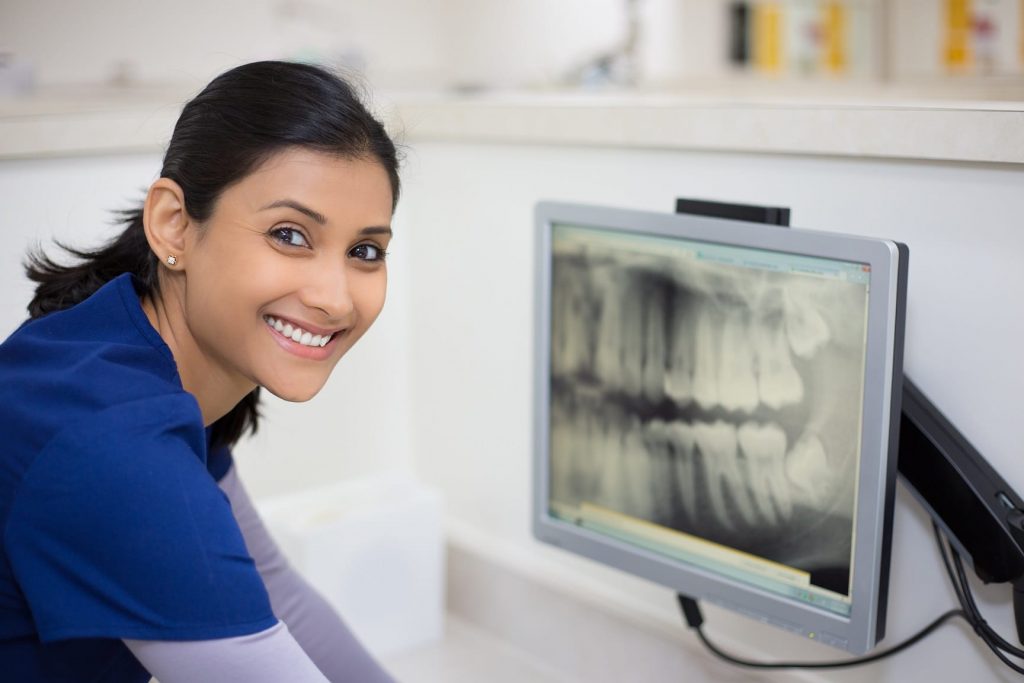Digital X-Rays
Traditional dental x-rays are an important part of both preventative and restorative dental care. They reveal what is going on in the mouth that cannot be seen with the naked eye so that dentists are able to create better treatment plans and deliver more efficient dental care. Dental x-rays can also help dentists to detect issues that are just beginning to arise so that they can be addressed and resolved before they develop into a more major problem. That said, traditional dental x-rays are not always the most appropriate form of dental radiography for every patient or for every oral health situation. They take time to process and they are subject to human error, as they must be processed with the use of certain chemicals and can quite accidentally be underexposed or overexposed. Fortunately, digital x-rays provide dentists and their patients with another radiography option.

The Benefits of Digital X-Rays
Some of the advantages digital x-rays have over traditional x-rays include:
- Lower radiation levels. There are many instances wherein dental x-rays are advisable or necessary. However, individuals who are concerned about the radiation they receive from x-rays may have a difficult time weighing the benefits of x-rays against the risks. Digital x-rays produce roughly eighty percent less radiation than traditional x-rays, which may make them far more appealing to individuals who will benefit from receiving dental x-rays but are concerned about radiation.
- Greater comfort. Traditional x-rays are anything but comfortable to receive. They require that one wear a heavy lead apron and bite down on strange things that often have rough edges and can poke at the soft tissues inside your mouth. Digital x-rays are far less intrusive and far more comfortable to receive. Instead of biting down on rough-edged things, a sensor is placed inside the mouth at various locations. This sensor is connected by a thin wire to a computer that receives the images that are taken of your teeth.
- Faster results. Whereas traditional x-ray films need time to be developed, digital x-ray images are ready in as little as three seconds, saving both dentist and patient time. Furthermore they can be resized as needed–without the resizing resulting in image distortion or loss of detail–and even enhanced where necessary to improve brightness and contrast. This can be essential when any detected anomalies are small and difficult to clearly see on smaller or darker images.
- Higher quality. The images produced through digital x-rays tend to be crisper and of higher quality than the images produced through traditional x-rays. Part of this is simply the more efficient technology behind digital x-rays, but it is also due to the elimination of the potential for human error during the traditional x-ray film development process.
- Easier sharing. In cases where dental x-rays must be shared, as may happen when an individual is referred by their dentist to a specialist for some reason, digital x-rays can be very easily shared since they are saved in computer files. Traditional x-ray films, on the other hand, are physical films in physical files that must be taken from one location to another.
Additionally, digital x-rays allow for two hundred fifty-six different shades of grey, while traditional x-rays only allow for up to twenty-five different shades of grey. This can help immensely in not only detecting oral problems, but also in determining how extensive they are, since different levels of density help to indicate the extent of decay that has occurred.
Even with the many benefits offered by digital x-rays there are some instances where traditional x-rays are the more appropriate choice. For more information about digital x-rays and which choice is best for you, contact Dr. Nurminsky today.

